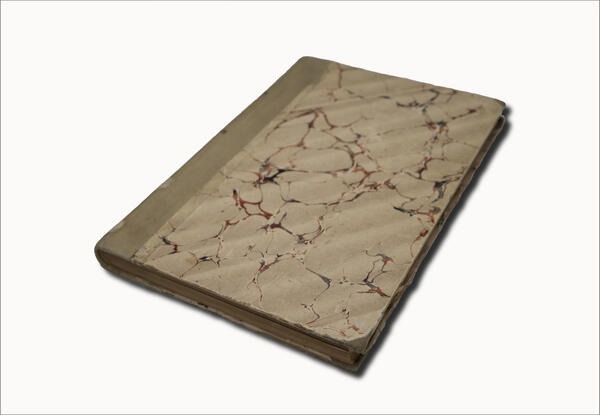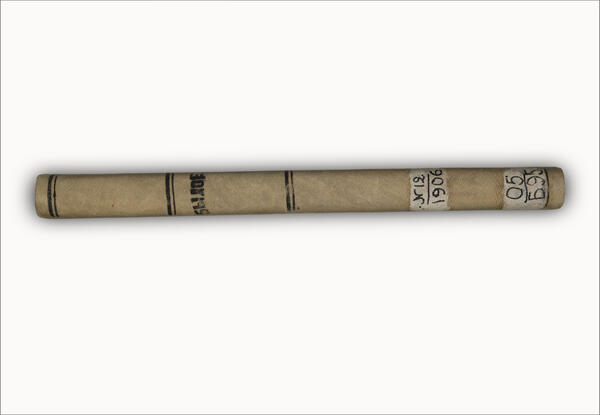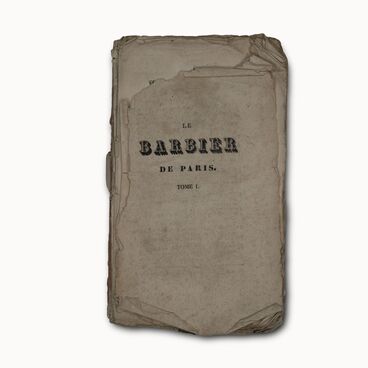Magazines played an important role in Saint Petersburg culture. Their pages contained original and translated poetry, prose, dramatic works, review articles, and news covering various aspects of life, both domestic and foreign. Russian magazines were published mainly in Saint Petersburg and Moscow.
“Byloye” was the first legal Russian magazine on the history of the revolutionary movement and was created by Pavel Shchyogolev. The monthly magazine, published in Saint Petersburg from 1906 to 1907, was edited by Vasily Bogucharsky and Pavel Shchyogolev, who were occasionally joined by Vladimir Burtsev. The circulation reached 30,000 copies. In 1907, the publication of the “Byloye” magazine was suspended, and in 1909, it was officially banned. From 1917 to 1926, the “Byloye” magazine was published at irregular intervals.
The materials of the magazine laid the foundation for studying the history of the revolutionary and social movements in Russia in the 19th century.
The “Byloye” magazine was published in books each consisting of 20 printed pages. The publishing house and editorial office changed their location several times, moving from Spasskaya Street to Znamenskaya Street and later to Liteyny Prospekt. A significant part of the materials published was old illegal literature and also some unreleased works and memoirs. The “Byloye” magazine printed biographies and memoirs of Vera Zasulich, Osip Aptekman, Alexander Ivanchin-Pisarev, Boris Savinkov, German Lopatin, Nikolai Morozov, Vera Figner, Mikhail Frolenko, as well as letters of Mikhail Bakunin, Alexander Radishchev, Pyotr Schmidt, correspondence between Konstantin Pobedonostsev and Nikolay Ignatyev. It also featured diaries, materials of the 1870s — 1880s trials of members of the Narodniks movement, as well as various documents and materials on the history of the Russian Revolution. The magazine also circulated reviews on historical literature and the works of Russian writers that had not been previously published.
This issue of the “Byloye” magazine was purchased for the Turinsk Decembrists House Museum in 1993 to become part of a collection of rare books that was formed to create a library display in the office of the Decembrist Vasily Petrovich Ivashev.
“Byloye” was the first legal Russian magazine on the history of the revolutionary movement and was created by Pavel Shchyogolev. The monthly magazine, published in Saint Petersburg from 1906 to 1907, was edited by Vasily Bogucharsky and Pavel Shchyogolev, who were occasionally joined by Vladimir Burtsev. The circulation reached 30,000 copies. In 1907, the publication of the “Byloye” magazine was suspended, and in 1909, it was officially banned. From 1917 to 1926, the “Byloye” magazine was published at irregular intervals.
The materials of the magazine laid the foundation for studying the history of the revolutionary and social movements in Russia in the 19th century.
The “Byloye” magazine was published in books each consisting of 20 printed pages. The publishing house and editorial office changed their location several times, moving from Spasskaya Street to Znamenskaya Street and later to Liteyny Prospekt. A significant part of the materials published was old illegal literature and also some unreleased works and memoirs. The “Byloye” magazine printed biographies and memoirs of Vera Zasulich, Osip Aptekman, Alexander Ivanchin-Pisarev, Boris Savinkov, German Lopatin, Nikolai Morozov, Vera Figner, Mikhail Frolenko, as well as letters of Mikhail Bakunin, Alexander Radishchev, Pyotr Schmidt, correspondence between Konstantin Pobedonostsev and Nikolay Ignatyev. It also featured diaries, materials of the 1870s — 1880s trials of members of the Narodniks movement, as well as various documents and materials on the history of the Russian Revolution. The magazine also circulated reviews on historical literature and the works of Russian writers that had not been previously published.
This issue of the “Byloye” magazine was purchased for the Turinsk Decembrists House Museum in 1993 to become part of a collection of rare books that was formed to create a library display in the office of the Decembrist Vasily Petrovich Ivashev.






